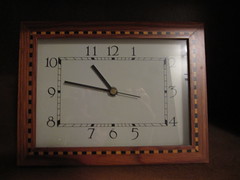It is better for the lucid and aware dreamer to control the dream than for the dreamer to be dreamed. The same is true with thoughts: it is better for the thinker to control the thoughts than for the thoughts to control the thinker.
-Tenzin Wangyal Rinpoche, The Tibetan Yogas of Dream and Sleep
Lucid dreaming is being aware you are dreaming while dreaming. For first-time lucid dreamers, this usually happens due to a strange occurrence in the dream, such as flying or seeing a strange creature appear. Some first-time lucid dreamers are able to stay in this dream for a while, but many become disturbed and wake up from the dream.
If you are in a lucid dream, you will usually have some power over your dream- anything from being able to fly or making an object or room appear behind a door or inside a pocket, right up to being able to change into animals and manipulate your dream world. It is like being a director of your own movie. Through dream research, lucid dreams have been scientifically proven to exist.
Here is the most common mistake I see being made by lucid dreaming beginners:
 Trying to induce lucid dreams at bedtime, during N-REM stages of sleep (Non-REM sleep)
Trying to induce lucid dreams at bedtime, during N-REM stages of sleep (Non-REM sleep)
Many lucid dreaming beginners attempt lucid dreaming techniques while going to sleep. But research has shown that dreams (both lucid and non-lucid) are much more common during your REM cycle, which first occurs 1-2 hours into your sleep. Dream-initiated and wake-initiated lucid dreams are much more common in the early morning, during your longer REM stages. During the early morning sleep cycles, the REM stage gets progressively longer (up to 45 minutes).
The Basics: Your Sleep Cycle
Your sleep moves in cycles, starting with wakefulness, moving to deep sleep, then back to wakefulness. You move through four to six of these cycles per night. Each cycle is comprised of five stages of sleep. Within the five stages of sleep: four stages of NREM (Non-REM) sleep, and one stage of REM (Rapid Eye Movement) sleep. Sleep specialists consider NREM sleep “an idling brain in a movable body”, and REM sleep “an active brain in a paralyzed body.” The most vivid dreams, and therefore the ones you remember the most, occur during REM sleep (though you dream in other stages too).
Attempting Lucid Dreaming at Bedtime Is Like Fishing In An Empty Pond
You spend more than two hours dreaming each night. You dream about once every 90 minutes of sleep. But the numbers are not your for favor when you attempt lucid dreaming at bedtime. Why? Your earliest dreams are much shorter than those in later sleep cycles. The time you spend in dreams becomes longer throughout the night, from about 10 minutes to around 45 minutes or slightly longer.
The Best Times To Attempt Lucid Dreaming
As you have most of your dreams during REM sleep in your later sleep cycles, and REM occurs in ninety-minute intervals, you should consider scheduling an alarm or naturally waking up during the later sleep cycles. Experiment with these times to see what works best for you:
- After four and a half hours of sleep
- After six hours of sleep
- After seven and a half hours of sleep
To get The Top Ten Most Common Mistakes Made by Lucid Dreaming Beginners, sign up for your Free Lucid Dreaming Starter Handbook.
This post is part of the Dream Evolver Series
![]() photo credit: CEThompson
photo credit: CEThompson